Non Toxic Oven Cleaning: Is your oven looking less like a culinary haven and more like a burnt offering? Let’s face it, cleaning the oven is a chore most of us dread. We’ve all been there, scrubbing tirelessly with harsh chemicals, holding our breath against the fumes, and still ending up with a less-than-sparkling result. But what if I told you there’s a better way? A way to achieve a gleaming oven without resorting to toxic chemicals that can harm you, your family, and the environment?
For generations, resourceful homemakers have relied on natural ingredients to keep their homes clean and healthy. Before the advent of commercially produced cleaning products, baking soda and vinegar were staples in every household, used for everything from laundry to, you guessed it, oven cleaning! This tradition reflects a deep understanding of the power of simple, readily available ingredients.
In today’s world, where we’re increasingly aware of the potential dangers of synthetic chemicals, the need for non toxic oven cleaning solutions is more pressing than ever. Many commercial oven cleaners contain harsh chemicals that can irritate your skin, eyes, and respiratory system. Plus, those lingering fumes can contaminate your food and pollute your indoor air. That’s why I’m excited to share some simple, effective, and completely natural DIY oven cleaning tricks that will leave your oven sparkling and your conscience clear. Get ready to ditch the harsh chemicals and embrace a healthier, happier way to clean!
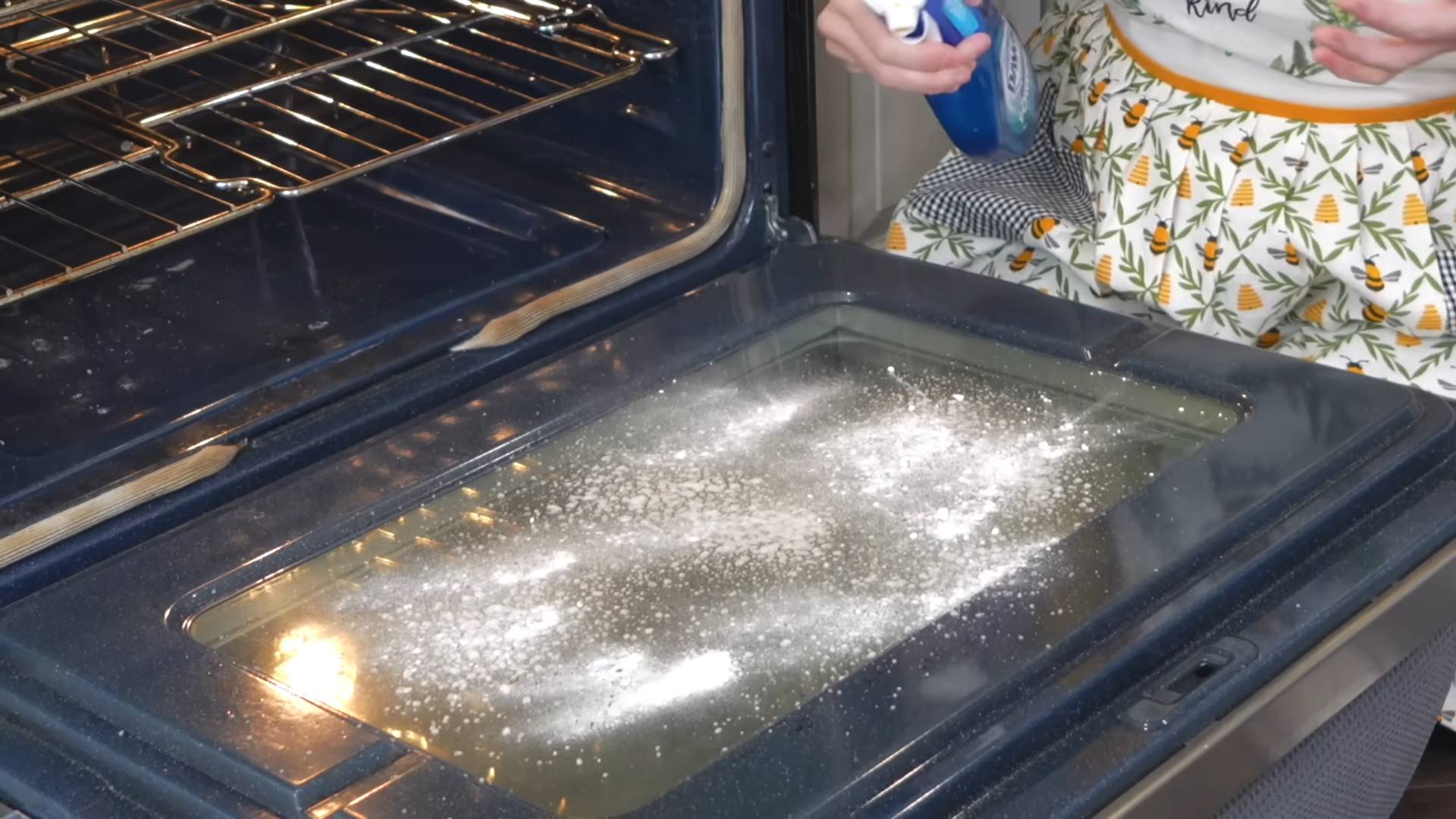
DIY Non-Toxic Oven Cleaning: A Sparkling Oven Without the Harsh Chemicals
Okay, let’s face it, cleaning the oven is probably on everyone’s list of least favorite chores. The fumes from commercial oven cleaners are awful, and honestly, I always worry about lingering chemicals affecting my food. That’s why I’ve perfected a super effective, completely non-toxic oven cleaning method using ingredients you probably already have in your pantry! Get ready to say goodbye to baked-on grime and hello to a sparkling clean oven, all without the nasty chemicals.
What You’ll Need: Your Arsenal of Natural Cleaning Power
Before we dive in, let’s gather our supplies. This is a pretty straightforward process, and the best part is, you won’t need to run to the store for anything special.
* Baking Soda: This is our main cleaning agent. Baking soda is a mild alkali and helps to dissolve grease and dirt.
* Water: Plain old water is essential for creating a paste and rinsing.
* White Vinegar: Vinegar reacts with the baking soda to create a fizzing action that helps loosen grime.
* Spray Bottle: For easy application of the vinegar.
* Rubber Gloves: Protect your hands from the baking soda paste, which can be a little drying.
* Sponge or Scrub Brush: For scrubbing away the loosened grime. I prefer a non-scratch scrub brush to avoid damaging the oven’s interior.
* Plastic Scraper or Spatula: For tackling stubborn baked-on messes.
* Paper Towels or Rags: For wiping down the oven.
* Small Bowl: For mixing the baking soda paste.
* Old Towels or Newspaper: To protect your kitchen floor.
Step-by-Step Guide: From Grimy to Gleaming
Alright, let’s get down to business! Follow these steps, and you’ll be amazed at how easy it is to clean your oven naturally.
1. Prepare the Oven: Safety First!
* Unplug the Oven: This is absolutely crucial! We’re dealing with water and electricity, so safety is paramount. Unplug the oven from the wall outlet.
* Remove Oven Racks, Thermometer, and Any Loose Items: Take out everything that isn’t permanently attached to the oven. This includes the racks, any oven thermometers, baking stones, or anything else you keep in there.
* Protect Your Floor: Lay down old towels or newspaper around the base of the oven to catch any drips or spills. This will save you from having to clean the floor later.
2. Mix the Baking Soda Paste: The Magic Potion
* Combine Baking Soda and Water: In your small bowl, mix together about ½ cup of baking soda with enough water to form a thick, spreadable paste. You’ll want it to be the consistency of frosting. Add the water gradually, mixing as you go, until you achieve the right consistency.
3. Apply the Baking Soda Paste: Coating the Interior
* Coat the Oven Interior: Using your rubber gloves, spread the baking soda paste all over the inside surfaces of the oven. This includes the back, sides, top, bottom, and door. Avoid the heating elements! You don’t want to get the paste on them.
* Focus on Grimy Areas: Pay special attention to areas with heavy baked-on grease and food splatters. Apply a thicker layer of paste to these spots.
* Don’t Forget the Glass Door: Spread the paste on the inside of the oven door as well.
4. Let it Sit: The Waiting Game (But Worth It!)
* Wait at Least 12 Hours: This is the most important step! The baking soda needs time to work its magic and loosen the grime. I usually apply the paste at night and let it sit overnight. For really tough messes, you can even let it sit for up to 24 hours. The longer it sits, the easier it will be to clean.
5. Clean the Oven Racks: While You Wait
* Soak the Racks: While the baking soda is working its magic inside the oven, let’s tackle the racks. Fill your bathtub or a large utility sink with hot, soapy water. Add about ½ cup of baking soda to the water.
* Submerge the Racks: Place the oven racks in the water and let them soak for at least a few hours, or even overnight.
* Scrub the Racks: After soaking, use a scrub brush or sponge to scrub away any remaining grime. For stubborn spots, you can use a paste of baking soda and water directly on the racks.
* Rinse and Dry: Rinse the racks thoroughly with clean water and dry them with a towel.
6. The Big Clean: Removing the Baking Soda Paste
* Wipe Away the Paste: After the waiting period, use a damp sponge or rag to wipe away as much of the dried baking soda paste as possible. You’ll likely need to rinse the sponge frequently.
* Use a Scraper for Stubborn Spots: For any areas where the paste is particularly stubborn or where there’s still baked-on grime, use a plastic scraper or spatula to gently scrape it away.
* Don’t Force It: If you’re having trouble removing the paste, don’t force it. Spray the area with a little water and let it sit for a few minutes to soften the paste.
7. The Vinegar Rinse: The Final Touch
* Fill the Spray Bottle with Vinegar: Pour white vinegar into your spray bottle.
* Spray the Interior: Spray the entire interior of the oven with vinegar. The vinegar will react with any remaining baking soda, causing it to fizz. This fizzing action helps to loosen any remaining grime.
* Wipe Down Again: Use a clean, damp sponge or rag to wipe down the oven interior again, removing any remaining vinegar and baking soda residue.
8. Final Touches: Making it Sparkle
* Dry the Oven: Use a clean, dry towel to dry the inside of the oven.
* Clean the Glass Door: If the glass door still has streaks or residue, use a glass cleaner to make it sparkle.
* Replace the Racks: Once the oven is completely dry, replace the oven racks.
* Plug the Oven Back In: Finally, plug the oven back into the wall outlet.
Dealing with Extra Stubborn Grime: When the Going Gets Tough
Sometimes, even with the best efforts, you might encounter some extra stubborn grime. Don’t worry, I’ve got a few tricks up my sleeve!
* More Baking Soda Paste: If a particular area is still dirty, apply a fresh layer of baking soda paste and let it sit for a few more hours.
* Baking Soda and Salt Scrub: For extra scrubbing power, mix baking soda with a little salt to create a more abrasive scrub. Use this mixture sparingly, as it can scratch the oven’s surface.
* Lemon Power: Cut a lemon in half and rub it over the stubborn areas. The citric acid in the lemon can help to break down grease and grime. You can also place the lemon halves in a baking dish with some water and bake them in the oven at 350°F for 30 minutes. The steam from the lemon water will help to loosen the grime.
Maintaining Your Clean Oven: Keeping it Sparkling Longer
Now that you’ve got a sparkling clean oven, let’s talk about how to keep it that way!
* Wipe Up Spills Immediately: The best way to prevent baked-on grime is to wipe up spills as soon as they happen.
* Use Oven Liners: Consider using oven liners to catch drips and spills. These can be easily removed and cleaned, preventing messes from baking onto the oven floor.
* Regular Cleaning: Don’t wait until your oven is completely covered in grime to clean it. A quick wipe-down every few weeks can prevent buildup and make cleaning much easier in the long run.
* Self-Cleaning Cycle (Use Sparingly): If your oven has a self-cleaning cycle, use it sparingly. While it can be effective, it also uses a lot of energy and can produce strong odors. Plus, it’s always better to avoid harsh chemicals whenever possible!
And there you have it! A sparkling clean oven, achieved without any harsh chemicals. I hope this guide helps you conquer your oven cleaning woes and enjoy a healthier, happier kitchen. Happy cleaning!
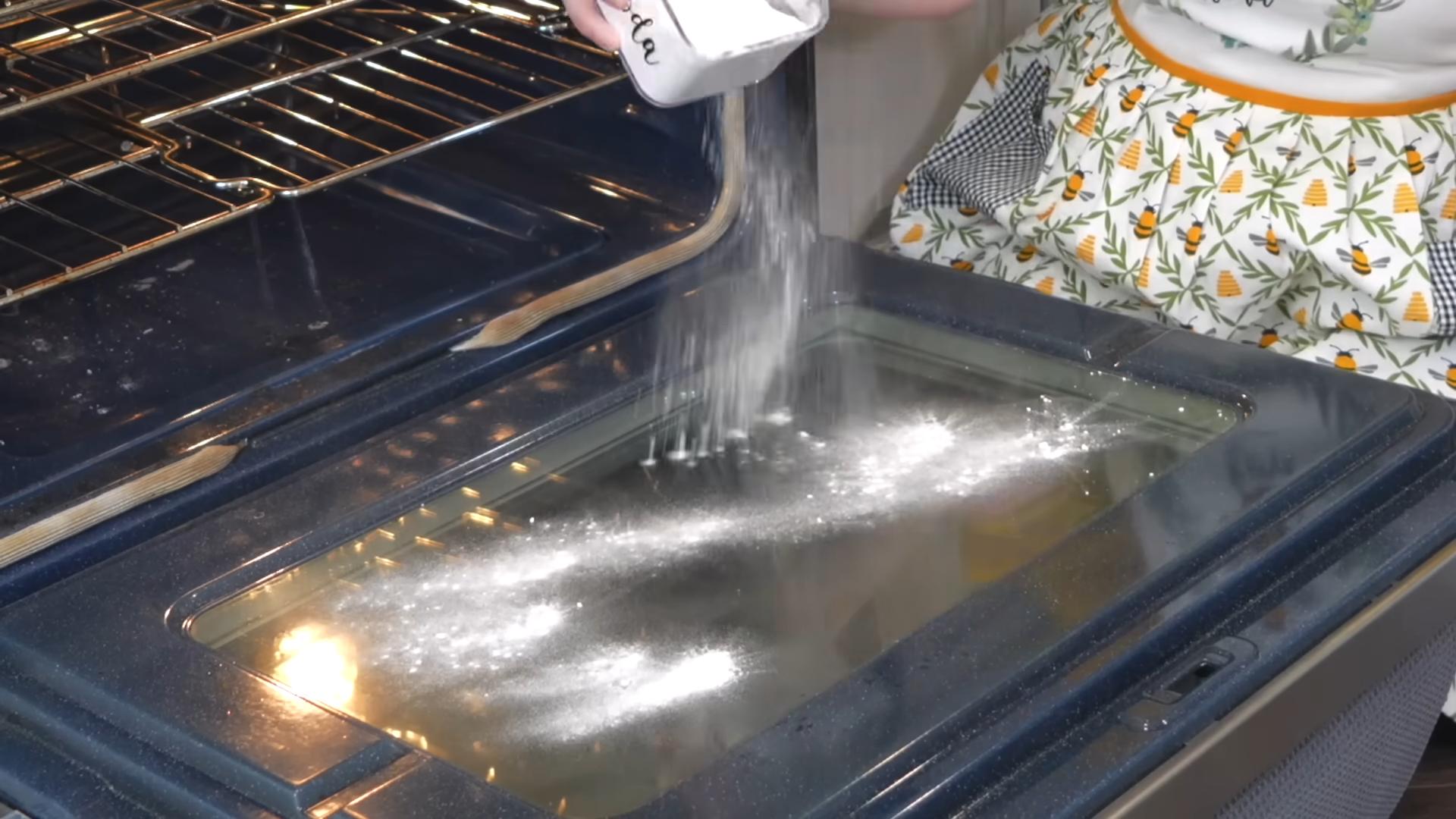
Conclusion
So, there you have it! Ditching harsh chemicals and embracing this non toxic oven cleaning method is more than just a trend; it’s a smart, safe, and effective way to maintain a sparkling clean oven. We’ve walked you through a simple process using ingredients you likely already have in your pantry: baking soda, vinegar, and a little bit of elbow grease. The benefits are undeniable – a healthier home environment, no lingering chemical smells, and a clean oven that’s ready to bake up delicious meals.
But why is this DIY trick a must-try? Beyond the health and environmental advantages, it’s incredibly cost-effective. Think about it: you’re saving money on expensive, store-bought cleaners that are often filled with questionable ingredients. Plus, you’re gaining a sense of accomplishment knowing you’re taking control of your cleaning routine and making conscious choices for your family’s well-being.
Don’t be afraid to experiment with variations to personalize this method to your specific needs. For instance, if you have a particularly stubborn stain, try creating a thicker paste of baking soda and water and letting it sit overnight. You can also add a few drops of your favorite essential oil, like lemon or tea tree, to the vinegar solution for an extra boost of freshness and antibacterial properties. Just be sure the essential oil is safe for use around food surfaces. Another variation is to use a pumice stone (carefully!) on baked-on messes after the baking soda paste has done its work. Remember to always test a small, inconspicuous area first to ensure it doesn’t scratch the oven surface.
We understand that switching to a DIY cleaning method might seem daunting at first, but trust us, the results are worth it. The peace of mind knowing you’re not exposing yourself and your loved ones to harmful chemicals is invaluable. And the satisfaction of seeing your oven gleam without the use of harsh toxins is truly rewarding.
So, what are you waiting for? Give this non toxic oven cleaning method a try! We’re confident you’ll be amazed by the results. And most importantly, we want to hear about your experience. Share your before-and-after photos, your tips and tricks, and any variations you’ve discovered in the comments below. Let’s build a community of conscious cleaners who are committed to creating healthier homes, one sparkling oven at a time. Your feedback will not only help others but also inspire us to continue sharing effective and eco-friendly cleaning solutions. Let’s make our kitchens cleaner and our planet greener, together!
Frequently Asked Questions (FAQ)
1. Is this non toxic oven cleaning method really as effective as store-bought chemical cleaners?
Yes, absolutely! While it might require a little more elbow grease than some harsh chemical cleaners, this method is surprisingly effective, especially with regular use. The combination of baking soda and vinegar creates a powerful cleaning action that can break down grease and grime. The key is to allow the baking soda paste to sit for several hours, or even overnight, to loosen the baked-on messes. For particularly stubborn stains, you may need to repeat the process or use a scraper to gently remove the residue. Remember, consistency is key. Regular cleaning with this method will prevent buildup and make future cleanings even easier.
2. Will this method work on self-cleaning ovens?
While this method is generally safe for most ovens, it’s always best to consult your oven’s manual before trying any new cleaning method, especially on self-cleaning ovens. Some manufacturers advise against using any cleaning products, even natural ones, inside self-cleaning ovens. If your manual allows for it, this method can be a gentler alternative to the high-heat self-cleaning cycle, which can sometimes produce unpleasant odors and even damage oven components. However, be sure to thoroughly remove all traces of baking soda paste before running the self-cleaning cycle, as any residue could potentially cause issues. If you are unsure, stick to cleaning the oven manually with this method and skip the self-cleaning cycle altogether.
3. How often should I use this non toxic oven cleaning method?
The frequency of cleaning depends on how often you use your oven and how much it tends to get dirty. As a general guideline, cleaning your oven every 1-3 months is a good starting point. If you frequently bake or cook messy dishes, you might want to clean it more often. Regular cleaning will prevent the buildup of grease and grime, making each cleaning session easier and more effective. You can also spot-clean spills as they happen to prevent them from baking onto the oven surface.
4. Can I use this method on other parts of my oven, like the racks and the glass door?
Yes, this method is safe and effective for cleaning oven racks and the glass door. For the racks, you can soak them in a tub of hot water with baking soda and vinegar. Let them soak for several hours, then scrub them clean with a brush or sponge. For the glass door, apply the baking soda paste as you would inside the oven, let it sit, and then wipe it clean. You can also use a scraper to gently remove any stubborn baked-on residue. Be careful not to scratch the glass.
5. What if I don’t have vinegar? Can I use something else?
While vinegar is a key ingredient in this method, you can try using lemon juice as a substitute. Lemon juice is a natural degreaser and has antibacterial properties. Mix lemon juice with water in a spray bottle and use it in place of the vinegar solution. However, vinegar is generally more effective at cutting through grease and grime, so it’s the preferred option. If you don’t have either vinegar or lemon juice, you can try using a paste of baking soda and water alone, but it may not be as effective.
6. Is baking soda safe to use on all oven surfaces?
Baking soda is generally safe to use on most oven surfaces, including stainless steel and enamel. However, it’s always a good idea to test a small, inconspicuous area first to ensure it doesn’t cause any discoloration or damage. Avoid using baking soda on delicate surfaces or areas with exposed heating elements. Also, be sure to thoroughly rinse away all traces of baking soda after cleaning, as any residue can leave a white film.
7. How can I prevent my oven from getting so dirty in the first place?
Prevention is key to keeping your oven clean and reducing the need for frequent deep cleanings. Here are a few tips:
* Use oven liners or baking sheets to catch spills and drips.
* Clean up spills immediately after they happen.
* Avoid overfilling dishes that might bubble over.
* Consider using a splatter guard when cooking dishes that tend to splatter.
* Wipe down the inside of your oven regularly with a damp cloth to remove any loose debris.
By following these simple tips, you can keep your oven cleaner for longer and reduce the amount of time and effort required for cleaning.
8. What if the baking soda paste dries out and becomes difficult to remove?
If the baking soda paste dries out and becomes difficult to remove, simply dampen it with a spray bottle filled with water or vinegar solution. Let it sit for a few minutes to soften the paste, then wipe it away with a damp cloth or sponge. You can also use a scraper to gently loosen the dried paste. Avoid using excessive force, as this could scratch the oven surface.
9. Can I use this method on a convection oven?
Yes, this method is generally safe to use on convection ovens. However, be extra careful to avoid getting any baking soda paste on the convection fan or heating element. If you do accidentally get paste on these components, be sure to thoroughly wipe them clean with a damp cloth. As with any oven, it’s always a good idea to consult your oven’s manual before trying any new cleaning method.
10. What are the benefits of using a non toxic oven cleaning method compared to chemical cleaners?
The benefits of using a non toxic oven cleaning method are numerous:
* Healthier Home Environment: Avoids exposure to harsh chemicals that can irritate the skin, eyes, and respiratory system.
* Environmentally Friendly: Reduces the use of harmful chemicals that can pollute the environment.
* Cost-Effective: Uses inexpensive ingredients that you likely already have in your pantry.
* Safe for Food Preparation: Eliminates the risk of chemical residue contaminating your food.
* No Lingering Chemical Smells: Leaves your oven smelling fresh and clean without the harsh odor of chemical cleaners.
* Peace of Mind: Provides the satisfaction of knowing you’re using a safe and effective cleaning method that’s good for your family and the planet.
By choosing a non toxic oven cleaning method, you’re making a conscious decision to prioritize your health, the environment, and the well-being of your loved ones.

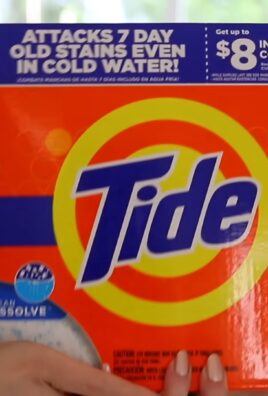
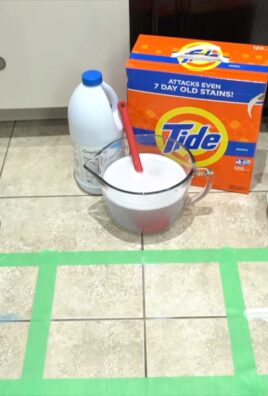
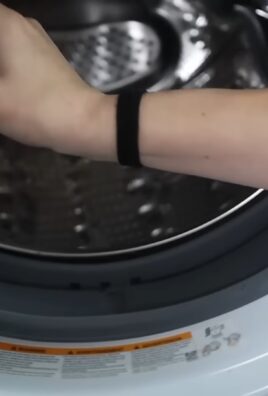
Leave a Comment